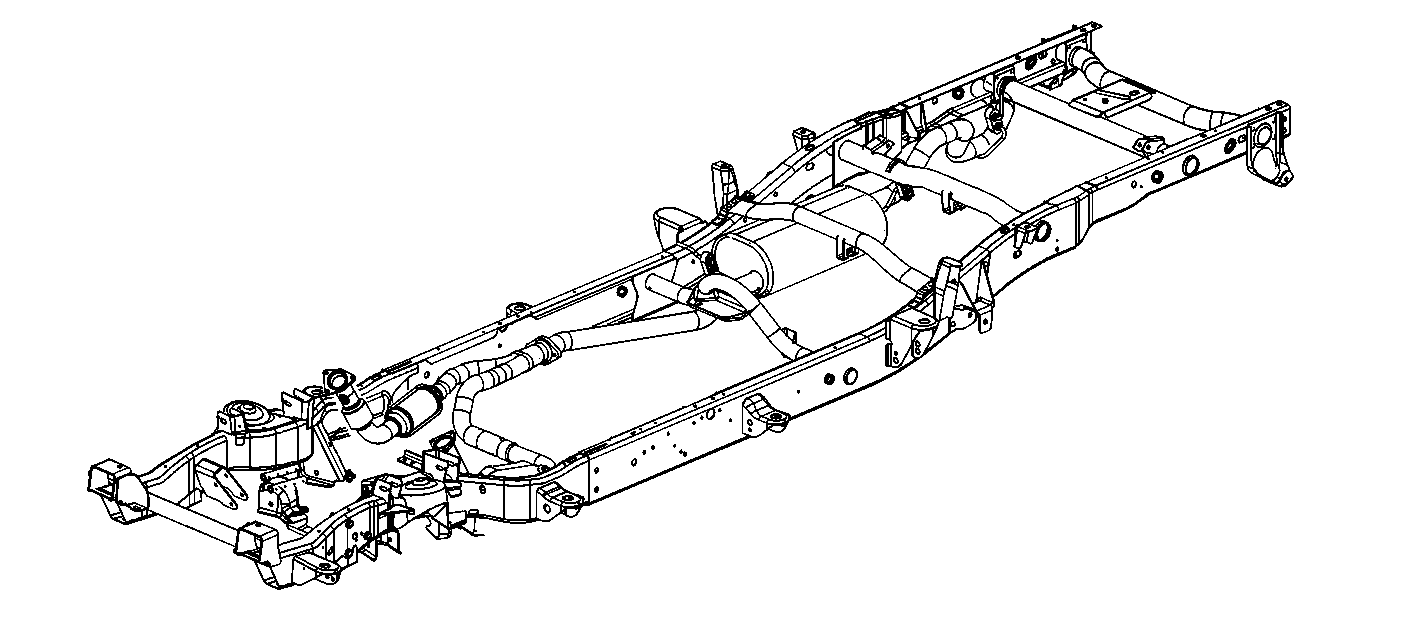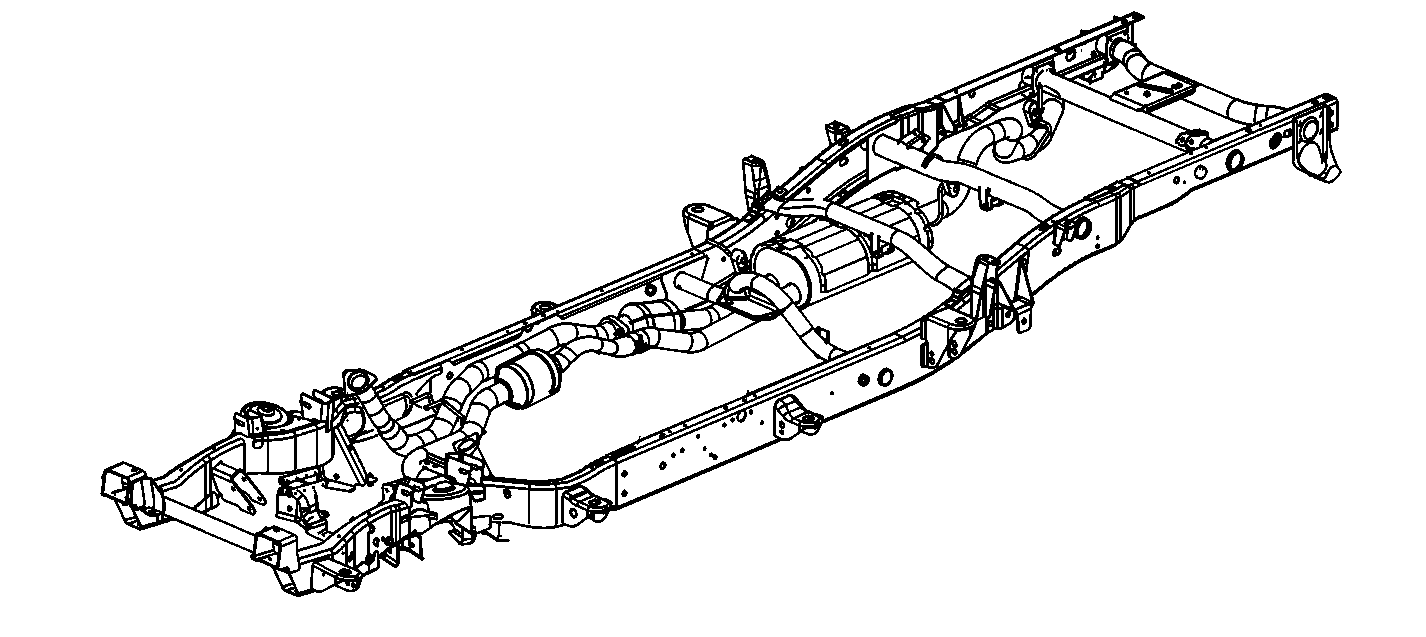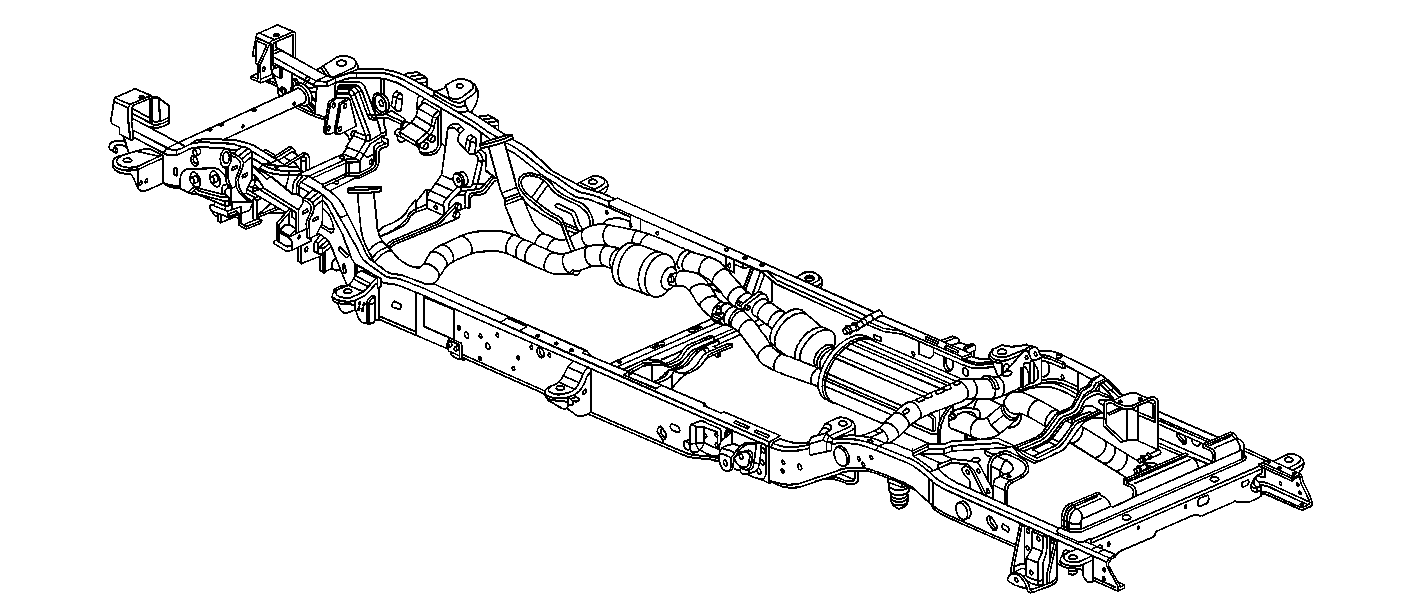Light Duty Emissions Pickup

The 4.3L, 4.8L, and 5.3L engines utilize a flat flange and a seal on the left exhaust manifold and a ball joint and seal on the right exhaust manifold. The ball joint allows for the system to self-align. A flat flange and a gasket are used at the junction of the rear system and the catalytic converter.
Heavy Duty Emissions Pickup

The 6.0L engine uses a flat flange and a seal for both the exhaust manifold connections and a combination of a slip joint for the front pipe and a flat flange for the catalytic converter at the junction of the rear system.
Light Duty Emissions Utility

The 4.8L and 5.3L engines utilize a flat flange and a seal on the left exhaust manifold and a ball joint and seal on the right exhaust manifold. The ball joint allows for the system to self-align. A flat flange and a gasket are used at the junction of the rear system and the catalytic converter. The utility exhaust systems employ a tuning chamber at the rear of the muffler which is connected to the tailpipe with a separate tube. This chamber is utilized to improve sound quality. The tube/chamber is not designed to flow exhaust gas.
Heavy Duty Emissions Utility

The 6.0L engine uses a flat flange and a seal for both the exhaust manifold connections and a combination of a slip joint for the front pipe and a flat flange for the catalytic converter at the junction of the rear system. The utility exhaust systems employ a tuning chamber at the rear of the muffler which is connected to the tailpipe with a separate tube. This chamber is utilized to improve sound quality. The tube/chamber is not designed to flow exhaust gas.
Catalytic Converters
The catalytic converter is an emission control device added to the engine exhaust system in order to reduce the hydrocarbon, the carbon monoxide and the nitrogen oxide pollutants from the exhaust gases. The catalyst in the converter is not serviceable.
Installing Exhaust Parts
Notice: When jacking or lifting the vehicle from the frame side rails, make sure the lift pads do not contact the catalytic converter as converter damage will result.
Important: When installing the exhaust pipe to the engine manifold, always use a new seal and nuts. Clean the engine manifold stud threads with a wire brush before installing the new nuts.
When installing a new exhaust pipe, muffler, or tailpipe, on any model, verify the proper alignment. Rattles and noise vibrations in the exhaust system are usually caused by the misalignment of parts. When aligning the system, leave all the bolts and the nuts loose until all the parts are properly aligned. Tighten the exhaust system components starting with the flat flange and then the engine. Damaged exhaust system hangers, hanger brackets, and clamps should be replaced in order to maintain exhaust system alignment.Removing Exhaust Parts
Caution: Always wear protective goggles and gloves when removing exhaust parts as falling rust and sharp edges from worn exhaust components could result in serious personal injury.
When removing the exhaust components, an accumulation of dirt and corrosion can make the work difficult. Using a penetrating oil on the threads of bolts can assist in the removal of these components.
